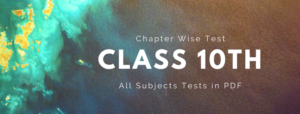
Step-by-Step Guide to Addressing Process Safety Audit Findings
Process safety management audits and inspections are vital components of ensuring a safe working environment in industries that handle hazardous materials and processes. These audits and inspections serve the purpose of identifying potential risks, hazards, and areas where safety measures may be lacking or inadequate.
By conducting thorough audits and inspections, organizations can proactively identify vulnerabilities in their operations and take corrective actions to mitigate the risks associated with process safety. This systematic approach helps in preventing major incidents, protecting employees, communities, and the environment.
The primary goal of process safety management audits and inspections is to assess the effectiveness of safety systems, procedures, and processes to ensure compliance with regulatory standards and industry best practices. These audits enable organizations to evaluate their safety performance, identify areas of improvement, and implement necessary measures to enhance process safety.
Process safety audits and inspections involve a comprehensive examination of various aspects, such as equipment integrity, process design, operating procedures, maintenance practices, emergency response plans, and employee training. By thoroughly assessing these critical factors, organizations can identify potential hazards, mitigate risks, and enhance safety protocols.
Investing time and resources in conducting process safety management audits and inspections demonstrates a commitment to employee well-being, environmental protection, and overall organizational excellence in terms of safety performance. Ultimately, the aim is to prevent accidents, minimize downtime, and prioritize the well-being of all stakeholders involved.
In the following sections, we will delve deeper into the process of conducting process safety audits and inspections, including defining the scope and criteria, prioritizing corrective actions, developing action plans, and effectively monitoring progress to maximize process safety outcomes.
Define the Scope and Criteria
When conducting a process safety audit, it is crucial to define the scope and criteria to ensure that the assessment is comprehensive and focused. This section provides guidance on how to effectively define the scope and criteria for a process safety audit, including identification of key areas to assess.
Understand the Purpose and Goals
Before defining the scope and criteria of the audit, it is important to understand the purpose and goals of the assessment. Consider why the audit is being conducted and what specific outcomes are desired. This will help in identifying the areas that need to be assessed and the level of detail required.
Identify the Key Areas to Assess
To define the scope of the audit, identify the key areas that will be assessed. This can include various aspects of process safety management, such as hazard identification, risk assessment, operating procedures, maintenance practices, training programs, emergency response plans, and management systems. Consider the relevant regulations, industry standards, and best practices to ensure a comprehensive assessment.
Determine the Level of Detail
Once the key areas have been identified, determine the level of detail required for the audit. This will depend on factors such as the complexity of the processes, the size of the facility, and the potential risks involved. Consider conducting a risk assessment to prioritize the areas that require more in-depth evaluation.
Establish Criteria for Evaluation
Next, establish the criteria for evaluation within each key area. These criteria will serve as the benchmarks against which the facility’s performance will be assessed. It is essential to base these criteria on relevant regulations, industry standards, and best practices. This will ensure that the audit provides a comprehensive evaluation of the facility’s compliance and performance.
Consider Stakeholder Inputs
When defining the scope and criteria, consider the inputs and perspectives of relevant stakeholders. This can include employees, managers, safety professionals, regulatory agencies, and external auditors. Involving stakeholders in the process will help in identifying potential blind spots and ensuring a holistic and objective assessment.
Document the Scope and Criteria
Finally, document the defined scope and criteria in a clear and concise manner. This documentation will serve as a reference throughout the audit process and provide clarity to all involved parties. Ensure that the scope and criteria are communicated to all relevant stakeholders to ensure a common understanding of the objectives and expectations.
By following these guidelines, organizations can effectively define the scope and criteria for conducting a process safety audit. This will lay the foundation for a comprehensive and focused assessment, leading to actionable findings and ultimately enhancing process safety performance.
Classify and Rank Corrective Actions
When conducting a process safety audit, it is crucial to identify and address any findings or areas of improvement. However, not all corrective actions carry the same weight in terms of potential impact and criticality. It is important to classify and rank these actions to prioritize their implementation effectively.
The first step in classifying and ranking corrective actions is to assess their potential impact on process safety performance. This involves considering the severity of the hazard or risk associated with each finding. By evaluating the potential consequences of not addressing the finding, you can determine its priority level.
To further prioritize corrective actions, it is also essential to consider the criticality of the finding. This involves assessing the likelihood of the finding occurring and the frequency of its exposure. By evaluating the criticality of each finding, you can identify those that require immediate attention and those that can be addressed over a longer time frame.
One useful method for classifying corrective actions is by using a risk assessment matrix. This matrix allows you to assign the severity of the hazard on one axis and the likelihood or frequency on the other axis. The intersection of these two values provides a risk rating, which can help determine the priority of the corrective action.
Another useful tool for ranking corrective actions is the Pareto analysis. This method involves identifying the most significant and recurring findings and focusing on addressing them first. By solving the root causes of these key issues, you can have a more significant impact on process safety performance.
Once you have classified and ranked the corrective actions, it is essential to develop a robust action plan. This plan should outline the specific steps required to address each finding, including assigning responsibilities and setting target dates for completion. By clearly defining the actions needed and the individuals accountable, you can ensure progress is made efficiently.
Regular monitoring of the action plan is vital to ensure accountability and track progress. Utilize tools such as Gantt charts to visualize the timeline and progress of each corrective action. By regularly reviewing the plan and tracking the status of each action, you can ensure that the necessary steps are being taken to address the findings identified during the process safety audit.
Develop an Action Plan
When addressing process safety audit findings, developing an effective action plan is crucial. This plan outlines the necessary steps to address the identified issues and ensures that corrective actions are implemented in a timely and efficient manner. By following a structured approach, organizations can effectively prioritize and manage the necessary changes to improve process safety performance.
Step 1: Review the Findings
The first step in developing an action plan is to thoroughly review and understand the process safety audit findings. Identify the specific areas that need improvement, such as equipment maintenance, training programs, or procedural compliance. It is essential to have a clear understanding of the findings to develop targeted solutions.
Step 2: Classify and Prioritize Corrective Actions
Once the findings have been reviewed, classify and prioritize corrective actions based on their potential impact and criticality. This classification ensures that resources are allocated efficiently and that high-risk issues are addressed first. Consider using risk matrices, Pareto charts, or other analytical tools to aid in prioritization.
Step 3: Assign Responsibilities
Assigning clear responsibilities is crucial for successful implementation. Identify the roles and individuals responsible for each corrective action. Assign a single accountable person for each action to ensure accountability and streamline communication. This person should have the necessary authority and resources to drive the implementation process.
Step 4: Define Target Dates
Setting target dates provides a sense of urgency and helps track progress. Establish realistic deadlines for the completion of each corrective action. Consider the complexity and resources required for each task when setting target dates. Remember to balance efficiency with feasibility to ensure the plan remains achievable.
Step 5: Develop Action Plans
For each corrective action, develop a detailed action plan outlining the specific steps required for implementation. Include key milestones, tasks, and resources needed to achieve the desired outcome. Consider utilizing tools such as Gantt charts or decision trees to visualize the timeline and dependencies of each action.
Step 6: Communicate the Action Plan
Communication is vital in ensuring the successful implementation of the action plan. Share the plan with all relevant stakeholders, including management, employees, and any external parties involved. Clearly communicate the objectives, responsibilities, and timelines to ensure everyone understands their role and the expectations.
Step 7: Monitor Progress
Regularly monitor the progress of the action plan to ensure accountability and address any potential roadblocks. Establish milestone checkpoints to track the completion of tasks and address any issues promptly. This allows for timely adjustments and ensures the plan stays on track.
Communicate and Monitor the Action Plan
Effective communication and ongoing monitoring of the action plan are critical to ensuring accountability and tracking progress in addressing process safety audit findings. By establishing clear lines of communication and implementing robust monitoring systems, organizations can ensure that corrective actions are being implemented correctly and that the desired outcomes are being achieved.
Establishing Clear Communication Channels
Regular Updates and Reporting
Regular updates and reporting channels should be established to keep all relevant stakeholders informed about the progress of the action plan. This can be done through weekly or monthly progress reports, meetings, or email updates. By providing timely and transparent information, everyone involved can have a clear understanding of the status of the corrective actions.
Utilizing Various Communication Methods
To ensure effective communication, organizations should utilize various communication methods to reach different stakeholders. This can include email updates, newsletters, intranet portals, or even dedicated communication platforms. By using different channels, organizations can increase the likelihood of reaching all stakeholders and ensuring that the message is delivered effectively.
Single Accountable Person
Assigning a single accountable person to oversee the communication process can streamline communication efforts and ensure consistent messaging. This person can act as a central point of contact for any questions or concerns related to the action plan, providing clarity and facilitating communication between different parties.
Monitoring Progress and Tracking Actions
Tracking Tools and Systems
Implementing tracking tools and systems is essential for monitoring the progress of corrective actions. This can include using software or online platforms specifically designed for tracking action items and their status. By utilizing these tools, organizations can easily monitor the completion of actions, identify any delays, and track overall progress.
Setting Target Dates and Milestones
Each corrective action should have a specific target date and milestones associated with it. These target dates and milestones help create a sense of urgency and provide clear deadlines for completion. By regularly reviewing and updating these dates, organizations can ensure that actions are progressing as planned and adjust timelines if necessary.
Establishing Review Processes
Regular reviews of the action plan’s progress are crucial to identifying any gaps or areas that may require additional attention. These reviews can be conducted through internal audits or assessments by third-party experts. By reviewing the progress and outcomes of the corrective actions, organizations can refine their approach and ensure continuous improvement.
Ensuring Accountability
Accountability is a fundamental aspect of the monitoring process. Each individual or team assigned to a corrective action should be responsible for its completion and should be held accountable for their progress. By establishing clear roles and responsibilities, organizations can ensure that each person understands their role in achieving the desired outcomes.
Additional Considerations
When it comes to addressing process safety audit findings, there are several additional factors to consider beyond the classification and ranking of corrective actions. These considerations can further enhance the effectiveness and success of the corrective action process. The following factors should be taken into account:
Effective Communication Channels
Communication is key when it comes to addressing process safety audit findings. It is crucial to establish effective communication channels to ensure that information and updates are properly conveyed to all relevant stakeholders. Utilizing multiple channels such as email updates, memos, meetings, and even digital platforms can help facilitate timely and accurate communication.
Regular Updates
Regular updates play a vital role in keeping everyone involved informed about the progress of corrective actions. These updates should include details on the status of each action, any challenges or obstacles encountered, and expected completion dates. By providing regular updates, stakeholders can stay engaged and actively contribute to the corrective action process.
Collaboration and Accountability
Addressing process safety audit findings requires collaboration among various individuals and departments within the organization. It is important to involve all relevant stakeholders in the action planning and implementation process. Assigning single accountable persons for each action can help ensure that responsibilities are clear and progress is monitored effectively.
Continuous Improvement
The corrective action process should not be seen as a one-time activity but rather as an opportunity for continuous improvement. It is important to learn from past experiences and apply lessons learned to future audits and inspections. This can be achieved through systematic audits and inspections, analyzing the results of corrective actions, and implementing holistic recommendations for facility safety improvement.
Integration with Existing Systems
To streamline the corrective action process, it is beneficial to integrate it with existing systems and processes. This could involve using software tools like Synergi or implementing an action register to track and manage corrective actions. By integrating the corrective action process with existing systems, organizations can ensure that all actions are aligned with the facility’s process safety goals and are effectively monitored.



